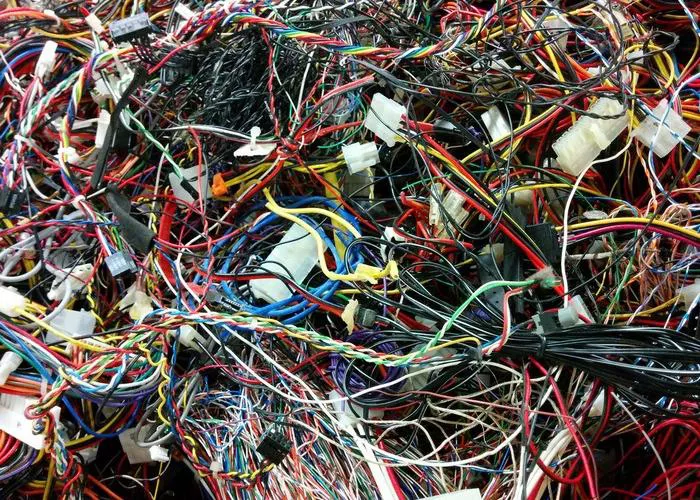When adding a sub panel to your electrical system, selecting the right type of wire is crucial for safety, performance, and compliance with electrical codes. Whether it’s for a workshop, garage, or a detached structure, the wire you choose will play a significant role in ensuring a reliable power supply. This article will delve into the principles behind selecting wire for sub panels, the factors to consider, and some practical tips for installation. Let’s break it down step by step.
Understanding Sub Panels
A sub panel is essentially a smaller service panel that branches off the main electrical panel. It is often used to provide power to areas of a property that require additional circuits, such as:
Garages or Workshops: To run power tools and equipment.
Detached Structures: For powering sheds, barns, or other outbuildings.
Expansion of Circuits: When the main panel has no room for additional breakers.
The sub panel requires a dedicated feed from the main panel, typically installed using a set of wires in a conduit or underground feed.
Types of Wires for Sub Panels
The wire you use for a sub panel must meet specific requirements based on load, distance, and local codes. The main categories of wire suitable for sub panels include:
1. Copper vs. Aluminum Wires
Copper Wires:
- Offer excellent conductivity and durability.
- Less prone to expansion and contraction, making them more stable over time.
- Often more expensive than aluminum wires.
Aluminum Wires:
- Lighter and more cost-effective.
- Require anti-oxidation compound at connections to prevent corrosion.
- Slightly larger gauge may be needed compared to copper for the same current rating.
2. Types of Wire Configurations
THHN/THWN Wires:
- Commonly used in conduit installations.
- Rated for wet and dry conditions (THWN is specifically rated for wet environments).
UF-B (Underground Feeder):
- Suitable for direct burial installations without the need for conduit.
- Resistant to moisture, sunlight, and soil exposure.
SER (Service Entrance) Cable:
- Ideal for above-ground sub panel installations.
- Contains multiple insulated conductors and a bare ground wire.
3. Conductor Sizes
Wire size is a critical factor determined by the electrical load and distance. The size is measured in American Wire Gauge (AWG), where smaller numbers indicate thicker wires. Typical sizes for sub panel feeds are:
100 Amp Sub Panel: #4 AWG Copper or #2 AWG Aluminum.
60 Amp Sub Panel: #6 AWG Copper or #4 AWG Aluminum.
30 Amp Sub Panel: #10 AWG Copper or #8 AWG Aluminum.
Key Factors to Consider
1. Load Calculation
Before selecting wire, calculate the expected electrical load for the sub panel. Load is measured in amperes (amps) and is determined by summing up the current requirements of all connected devices. Oversizing the wire slightly is recommended to allow for future expansion.
2. Distance to Sub Panel
Voltage drop becomes significant over long distances. A voltage drop greater than 3% can reduce the efficiency of your system and potentially damage connected equipment. To mitigate this:
- Increase the wire size for runs exceeding 100 feet.
- Use voltage drop calculators for precise sizing.
3. Code Compliance
The National Electrical Code (NEC) provides specific guidelines for wire selection, including:
- The need for separate neutral and ground wires in sub panels.
- Proper grounding and bonding at the sub panel.
- Conduit requirements for above-ground or exposed installations.
4. Environmental Factors
Indoor vs. Outdoor Installation: Ensure the wire insulation is rated for the conditions. For outdoor installations, UV-resistant or waterproof wires are essential.
Temperature Ratings: High temperatures can affect wire performance; choose wire with appropriate insulation for the environment.
Steps to Wire a Sub Panel
Determine the Ampacity:
Decide on the amp rating of the sub panel. Common ratings are 30, 60, or 100 amps.
Select the Appropriate Wire:
Refer to load calculations, wire type, and distance to make your choice.
Install the Conduit:
If required, run a conduit from the main panel to the sub panel location. Use PVC or metal conduit, depending on local code requirements.
Pull the Wires:
Feed the wires through the conduit, ensuring they remain intact and undamaged during installation.
Connect to the Main Panel:
Terminate the wires in the main panel, ensuring correct connections for the hot wires, neutral, and ground.
Connect to the Sub Panel:
Terminate the wires in the sub panel, keeping the neutral and ground connections separate.
Grounding and Bonding:
Install a grounding rod if required and connect it to the sub panel ground bar.
Common Mistakes to Avoid
Undersized Wires: Using wires that are too small can lead to overheating and fire hazards.
Neutral-Ground Bonding Errors: Sub panels must have separate neutral and ground connections to prevent ground loops.
Skipping Permits: Always consult local authorities and secure permits to ensure compliance with codes.
Improper Wire Protection: Exposed wires must be adequately protected with conduit or appropriate insulation.
Practical Example: Wiring a 100 Amp Sub Panel
Suppose you’re installing a 100-amp sub panel in a detached garage 75 feet from your main panel. Here’s how you might proceed:
Wire Type: Use #4 AWG Copper or #2 AWG Aluminum wires in a conduit.
Conduit: Use 1¼-inch PVC conduit for the feed.
Grounding: Install a separate grounding rod near the garage and connect it to the sub panel ground bar.
Conclusion
Choosing the right wire for a sub panel is not just about meeting electrical demands—it’s about ensuring safety, efficiency, and compliance with standards. Carefully assess factors such as load, distance, and environmental conditions before making a decision. When in doubt, consult a licensed electrician or refer to the NEC guidelines.
By taking the time to plan and select the appropriate wire, you can create a robust electrical system that serves your needs for years to come.

